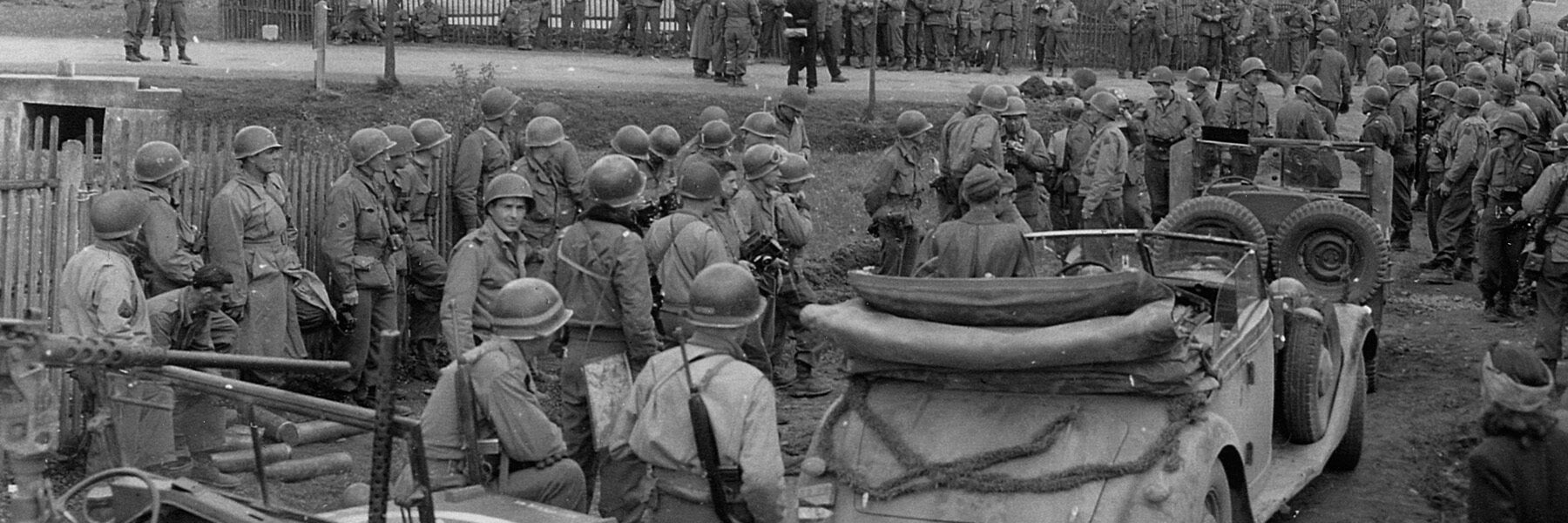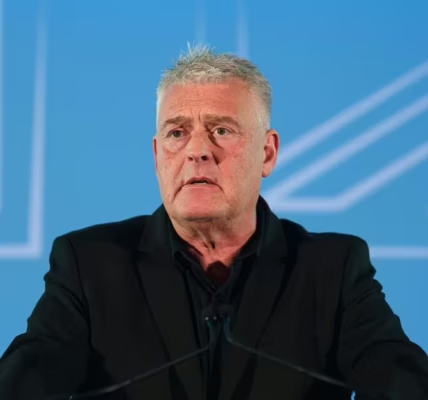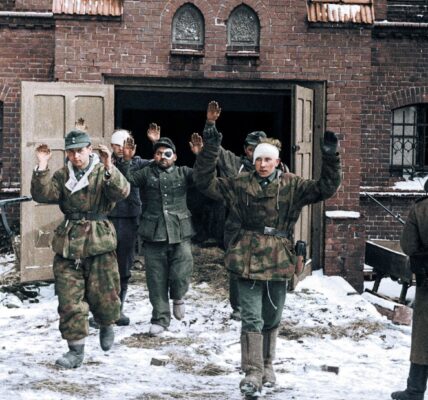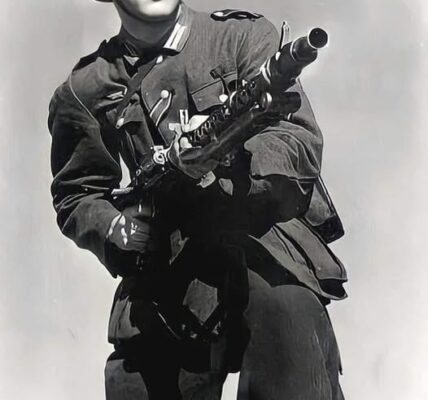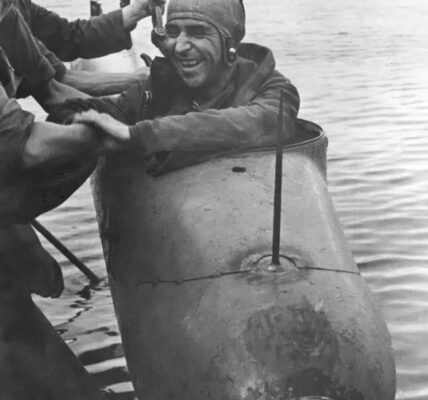By Brigadier General Raymond E. Bell Jr.
It was an impressive sight. Seated in the parade stand as the guest of honor was General Dwight D. Eisenhower, Supreme Commander of Allied Forces Europe. It was an autumn day in October 1946 in Munich, Germany, and he was just marching in for the 2nd Constabulary Regiment. At the head of the formation rode the regimental commander, Colonel Charles Reed, a veteran cavalryman, mounted on a stately warhorse. He was followed by a platoon of mounted soldiers, trotting ahead of a khaki band. Behind the musicians came the regiment’s motorized and mechanized vehicles, all fully occupied. As the final section filed down Munich Street, all observers agreed that the parade was a great success, and the regiment was praised for its achievement. The Americans held many such parades in postwar Germany, but this one was unique.
Eisenhower, and certainly everyone else outside the 2nd Constabulary Regiment, was unaware that not all of the uniformed participants were American soldiers. Half of the mounted soldiers, most of the musicians, and some of the vehicle crews were veterans of the demobilized German 11th Panzer Division, the Ghost Division. That this situation arose is a most fascinating story about the surrender of an elite combat division of the German army and its subsequent role in this impressive display of American force. It all had to do with the unique relationship between the division and the Constabulary Regiment and the woefully undermanned position of the 2nd Constabulary Regiment on parade day.
The origin of the German 11th Panzer Division
The 11th Panzer Division was originally formed in August 1940 in what was then the German province of Silesia, now part of Poland. Elements of the division, the 15th Panzer Regiment and the 11th Rifle Brigade, had previously participated in the Polish campaign of 1939 and the invasion of France and the Netherlands in 1940. The infantry brigade was reportedly given the nom de guerre “Ghost Brigade” by a British officer when the unit unexpectedly appeared behind Allied lines in the Netherlands during the German invasion of May 1940. In the autumn of 1940, when the 11th Panzer Division was formed, the new division adopted the title “Ghost Division” as a badge of honor. The 11th incorporated the image of a ghost into its symbol, which was used as part of its combat identification markings.
From France, the 11th Panzer Division deployed to the Balkans for the 1941 campaign. It then fought in Russia and was heavily involved in the Battles of Stalingrad in 1942. In 1943, it was awarded three medals for distinguished service on the Eastern Front. In the summer of 1944, the 11th Panzer Division was stationed in southern France as part of the German 19th Army, tasked with resisting an invasion of France from the Mediterranean. When the Americans and French landed on the southern coast of France in August, the 11th Panzer Division fought a rearguard action in the Rhône Valley. As the Western Front stabilized along the Franco-German border, the 11th Division fought well into the autumn of 1944.
Contact with the 2nd Cavalry
The German 11th Panzer Division first encountered elements of the 2nd Constabulary Regiment’s predecessor, the 2nd Cavalry Group, in Lorraine. As the Americans advanced into central Germany, the 11th Panzer Division was severely defeated but still successfully competed with US units such as the 94th Infantry Division. The German division earned a reputation as a tough but honorable opponent. Ultimately unable to withstand the overwhelming tide, it withdrew eastward in early May. The division, still intact as a combat unit, was just inside the western border of Czechoslovakia. This is where the story of the 11th Panzer Division’s surrender began.
The commanding general of the 11th Panzer Division was Lieutenant General Wendt von Wietersheim, a tall, handsome man of 45, and a capable and experienced commander. He was also a pragmatist. However, when the division surrendered, he was not officially recognized as its commander. On April 15, 1945, a full two weeks before the surrender of most of the 11th Panzer Division, von Wietersheim was relieved of division command and ordered to Berlin. His new assignment was command of Panzer Corps LI, an organization named “on paper” that was to participate in a final defense of the German capital. But von Wietersheim never reached Berlin.
Wietersheim’s hidden agenda
The German general, ever a realist, had realized that the end of the war was near, and he had no desire to be in the besieged capital at its end, no matter how many duties it demanded. Therefore, he called in sick and was unable to take up his new position. At the same time, he remained near divisional headquarters, where he was available for consultations with the new commander, Major General (Brigadier General) Freiherr Edgar von Buttlar, and the staff of the 11th Panzer Division. It seems to have been no problem to have the popular former commanding general in such close proximity to the division’s nerve center.
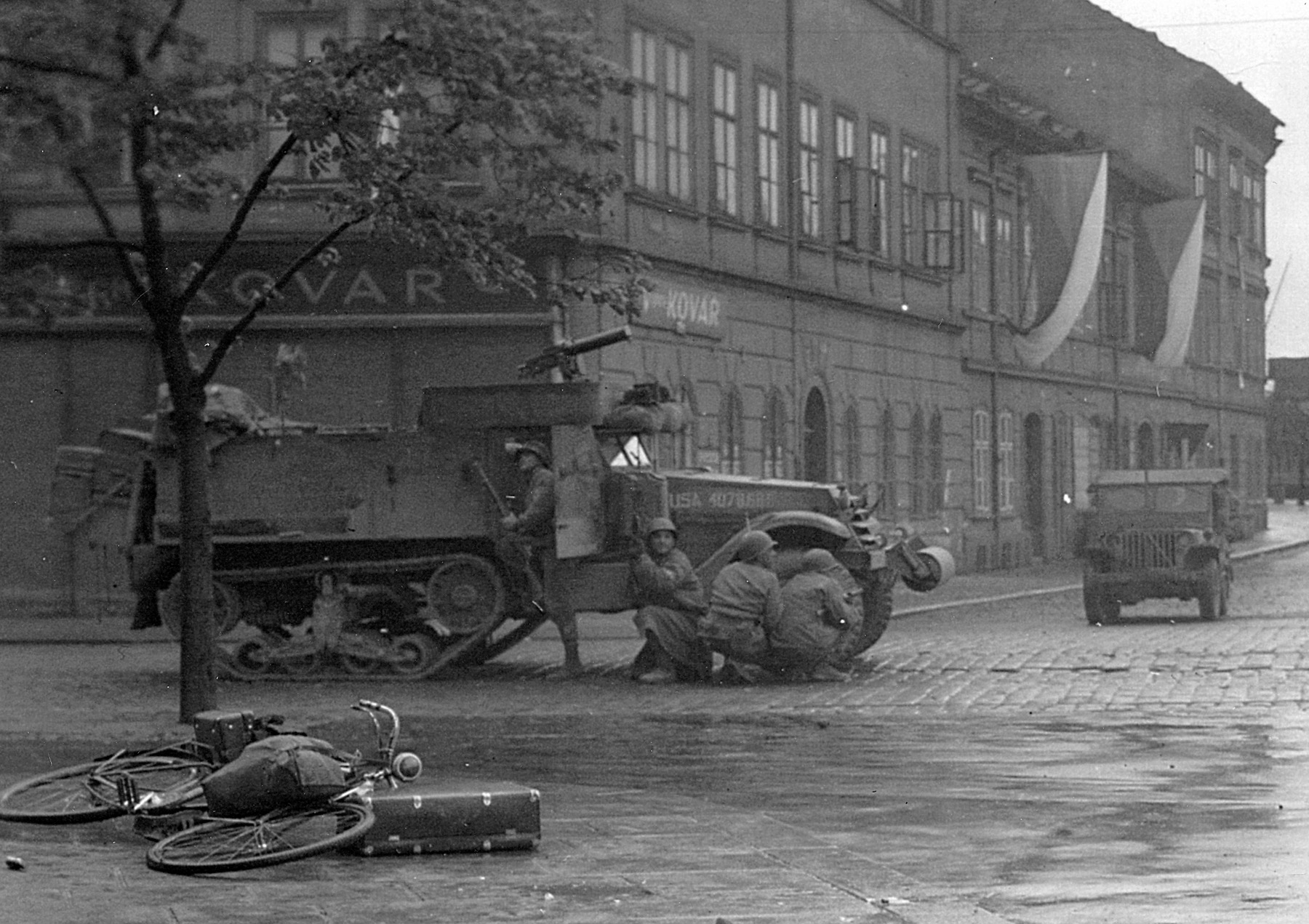
Apparently, it was also part of von Wietersheim’s secret intention to seek a suitable opportunity to bring the 11th Panzer Division to an honorable end by surrendering it to the Americans. He had apparently been thinking about this for the entire month before May 2, but events intervened and prevented him from taking this opportunity.
Race through the German-Czech border
When von Wietersheim relinquished command, the division was retreating into the Sudetenland, near the border of western Czechoslovakia. Here, the 11th Panzer Division tried in vain to slow the rapid advance of General George S. Patton Jr.’s Third Army. While columns of the American 11th Panzer Division, supported by infantry units, advanced southeastward along the southern German-Czech border, the 11th Panzer Division attempted to push the advances back into their positions by supporting U.S. infantry divisions such as the 26th and 90th Divisions and the 2nd Cavalry Group.
The rapid American advance toward Linz, Austria, led to conflicting orders from the German High Command to the 11th Panzer Division. On April 25, a battle group consisting of the 111th Panzergrenadier Regiment and a tank company with combat support and force support elements was ordered to the Czech town of Domazlice. The rest of the 11th Panzer Division was to join the battle group once the division received the fuel needed for the advance. Meanwhile, the 11th Panzer Division’s mission was to block an American advance on Pilsen, the Czechoslovak home of the world-famous Pilsner beer. On April 28, the division reached its assigned area of operations near the Czech-German border.
To Volary
No sooner had the bulk of the division assembled at its new location than the German 11th Panzer Division received orders to advance another 96 kilometers southeast over mountainous terrain to the Czech town of Volary. The new mission was to prevent the US 11th Panzer Division from entering Linz.
This operation, too, was fragmented due to the now critical lack of fuel. The fuel was only sufficient for the movement of the previously formed combat group, which was led southeast by the “official” division commander, von Buttlar. Von Wietersheim remained “incapacitated” with the main body of the division at Domazlice. On May 2, von Buttlar and his combat group reached the vicinity of Volary, where they soon encountered the 26th US Infantry Division. His units were not only low on fuel, but were also out of effective signal communication range with the main body of the 11th Panzer Division.
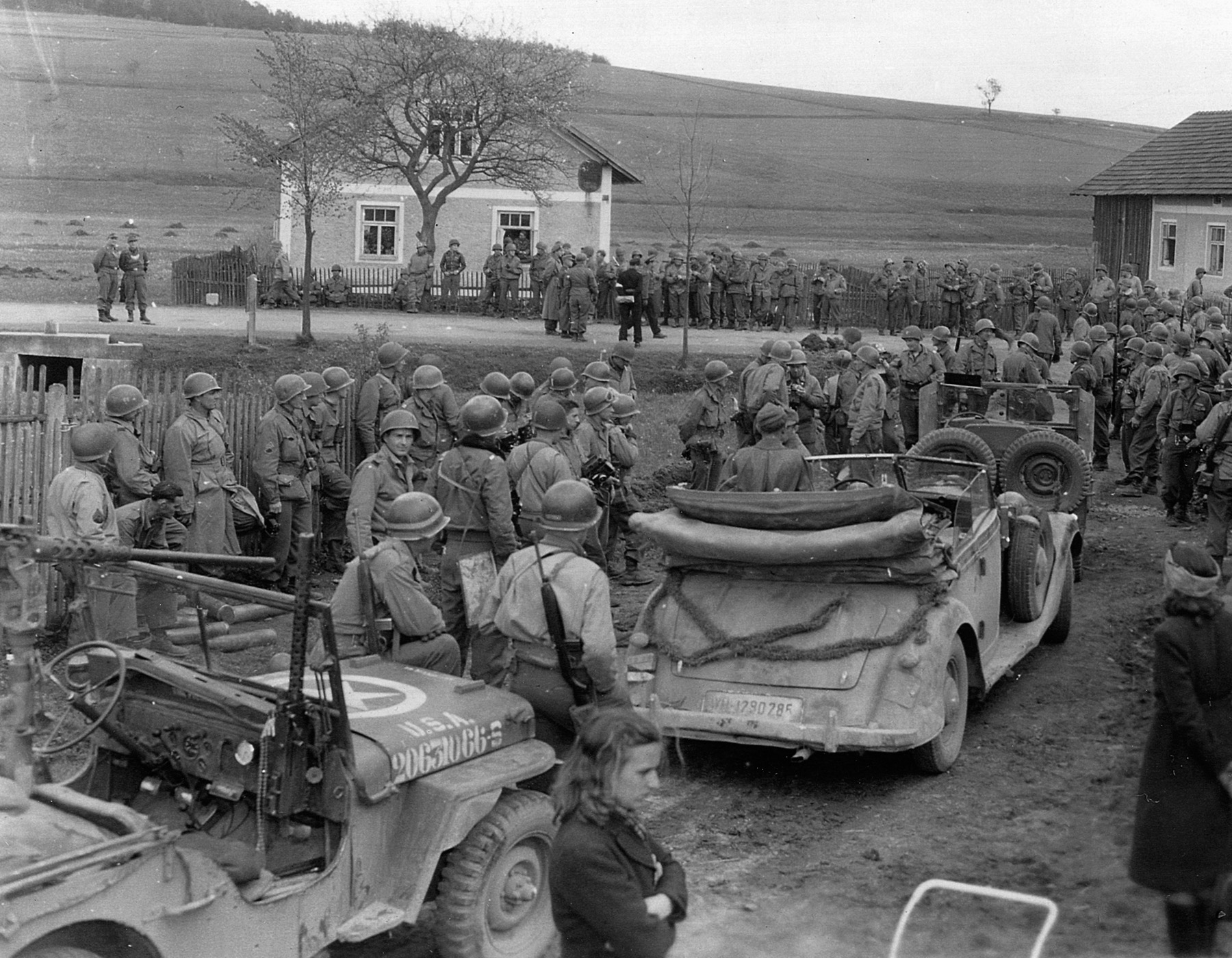
Knowing the Enemy: How the 2nd Cavalry and the 11th Armored Division “knew” each other
At this point, bright minds, both German and American, would prevail. At the end of April, elements of the 2nd U.S. Cavalry Group (commanded by Colonel Reed throughout the war) had marched into the Czech town of Hostoun to rescue some 500 Lipizzaner horses. Reed’s men also had to contend with fanatical Nazis and soldiers studying at non-commissioned officer schools that had been transferred from Germany to Czechoslovakia. However, Reed would do the 11th Armored Division a great favor. Operating on the left flank of the advancing U.S. units along the Czech-German border, the 2nd Cavalry, fighting skirmishes with units of the 11th Armored Division, soon came into contact with the forward elements of the Soviet Red Army advancing from the east. When the Soviets realized that the 11th Panzer Division was nearby, they tried to force the German division to surrender.
The 2nd Cavalry Division had little interest in handing over German soldiers to the Soviets. This was partly due to distrust of the German troops, but also because the 2nd Cavalry Division and the 11th Armored Division had already met in combat and “knew” each other. During fighting in the French province of Lorraine in 1944, the two adversaries had exchanged severely wounded soldiers. General Patton, who, like Colonel Reed, was an experienced cavalryman, also knew the 11th Armored Division. Perhaps Reed, who knew Patton, shared some of Patton’s antipathy toward the Soviets. In any case, Colonel Reed played an important role in thwarting Soviet attempts to draw the Ghost Division into their clutches.
Patton to save the 11th Armored Division
Colonel Reed could not have acted without the influence of General Patton. He is given much credit for allowing the German 11th Armored Division to surrender to the U.S. Army. Patton took a great risk by allowing the division’s surrender. He had received strict instructions not to interfere in the political decisions that gave the Soviets the right to claim all German forces in Czechoslovakia as prisoners of war. Nevertheless, he authorized the surrender of the 11th Armored Division because it was “…the fairest and bravest of all the German divisions he had fought against in this war.” However, his decision was also approved by General Omar Bradley, who emphasized that the 11th Armored Division had to be taken prisoner in an orderly manner.
While Colonel Reed held off the Soviets, the German soldiers of the 11th Panzer Division prepared to surrender to the Americans. This meant that most German units were preparing to march into the arms of their enemies. However, there was a complication. While a large part of the 11th Division was centered around the town of Domazlice, this part was still 96 kilometers away in Volary. And the official division commander was not in Domazlice, but with his Kampfgruppe Volary, which was only in contact with units near Domazlice via a motorized messenger.
Von Wietersheim again takes over the command to negotiate the surrender
Although, strictly speaking, there was no division commander for most of the 11th Panzer Division, General von Wietersheim was present, even though he was officially hospitalized. Having already disobeyed the order to report to Berlin, it would have been easy for him to ignore further illogical orders and even carry out unconventional actions. Therefore, on May 2, von Wietersheim summoned all senior division officers present in the Domazlice area. He informed them of his intention to negotiate the division’s surrender with the Americans. When the majority of the officers agreed to his plans (the Nazi Party members in command strongly objected), von Wietersheim resumed command of the division.
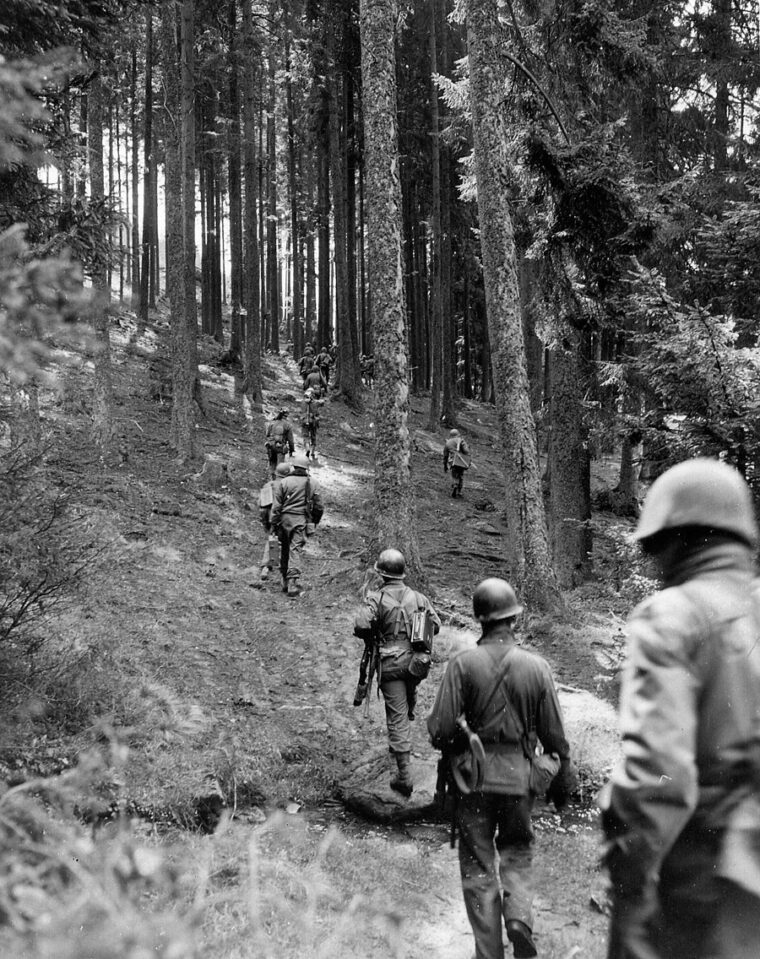
Von Buttlar, on the other hand, agreed to allow von Wietersheim to resume command and begin negotiations, but he did not take his own leadership responsibilities lightly. He considered it necessary to prepare for the execution of a transfer order to Brno. But von Buttlar, whose troops now faced the 26th US Infantry Division, was also a pragmatist. He was therefore willing to ask his men what they wanted once it became known that von Wietersheim and other key officers had persuaded the majority of the division’s personnel to engage in talks.
The outcome of Buttlar’s attempt to determine his troops’ preferences was not unexpected. They were eager to follow their comrades into the protective arms of the Americans. They also had little interest in further combat. They wanted honorable terms and did not want to surrender to the Soviets. To achieve these two goals, the division commanders had to establish the right contacts.
Political unrest complicates surrender
The 2nd Cavalry Group had already made contact with elements of the 11th Armored Division. At the same time, fanatical noncommissioned officers in German army schools carried out desperate actions. On one occasion, a patrol of the 2nd Cavalry was ambushed by these noncommissioned officers, and the captured vehicles were used as a pretext to attack a company of the 357th Infantry Regiment of the 90th U.S. Infantry Division , which was advancing into Czechoslovakia. The mood of some American soldiers when asked to surrender by the Germans was unpredictable, especially since the rights claimed by the Soviets were already known.
In fact, a German emissary was rudely rebuffed during his first attempt to contact the 90th Infantry Division. Major John H. Cochran Jr., operations officer of the 3rd Battalion, 359th Infantry Regiment, recalls that as a German soldier approached his unit’s position, he was taken to the battalion command post waving a white truce flag. The German insisted on being taken to the 90th Division’s chief of staff, which Cochran disliked. Cochran was offended, stating, “No German soldier would tell me what to do, so I sent him back to our perimeter. He was ordered to return to where he came from.”
No turning back for 11.
This was the first message not addressed to a specific individual or organization to reach the 3rd Battalion of the 359th Division. Prior contact with Colonel Reed’s 2nd Cavalry presumably gave von Wietersheim hope that such a message would automatically fall into the right hands. Nevertheless, it was a risky undertaking, and the rejection of the first formal contact regarding surrender must have worried the staff of the 11th Panzer Division. Once the first steps had been taken, there was no turning back, especially since the Soviets were putting pressure on Colonel Reed to accept the German surrender.
A second attempt to contact the Americans, however, was successful. The next morning, May 4, at 7:15 a.m., Technical Sergeant Fifth Class Walter Huskey of G Company of the same U.S. infantry battalion was guarding a forward outpost when he saw three German vehicles approaching. These Volkswagens carried white flags. A tall young major in the black uniform of the German Panzer Corps approached Huskey and requested a meeting with the U.S. division commander. It was the German logistics officer of the 11th Panzer Division, Major Voightmann, who penetrated G Company’s lines and was taken to the 90th Infantry Division command post in Cham, Germany, where he delivered the surrender proposal.
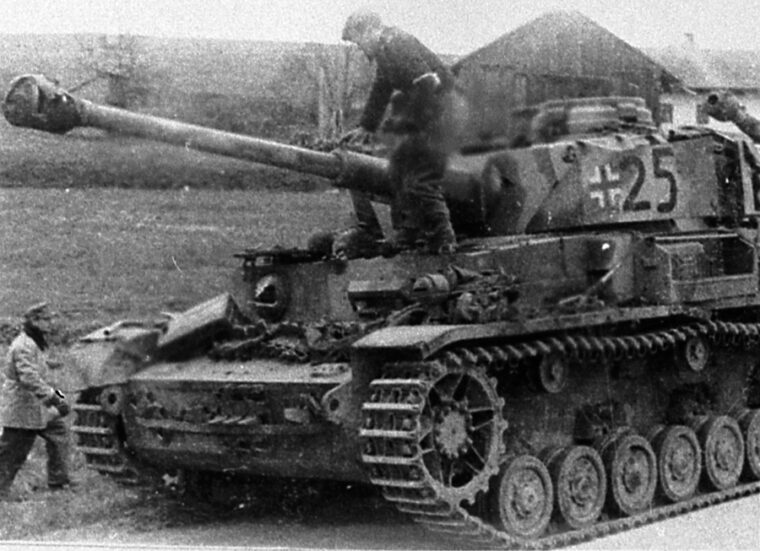
The persistence of Wietersheim and his staff paid off. For the 90th Infantry Division, however, this episode was only a minor blip in its overall tactical operations. On May 4, the XII Corps, the 90th’s immediate superior headquarters, had ordered the entire division to withdraw to a large neutral position around the German town of Viechtach, several kilometers from the Czech border. The division was to serve as the corps reserve. The German offer of surrender, as well as the order to the 357th Infantry Regiment to occupy and clear the access road to Czechoslovakia through the German town of Regen early on May 5, led to a change in the corps’ reserve plans. A combat command from the U.S. 4th Armored Division, spearheading an eastward thrust to capture the Czech capital of Prague, was then to pass through the 357th Regiment.
Race towards surrender
At this time, the 2nd Cavalry was experiencing considerable difficulty moving through the dense woods along the German-Czech border. While protecting the left flank of the 90th Division, the cavalry encountered resistance of great concern to the division it protected. On May 5, German officer cadets (the aforementioned non-commissioned officers) put up fierce resistance and cut off the path of a cavalry platoon. This had serious consequences for the 90th Division and could have negatively impacted the surrender negotiations with the 11th Panzer Division.
The necessity of a hasty surrender of the 11th Panzer Division became increasingly clear to the Germans. The delayed negotiations could have been further complicated by the ambush of the 2nd Cavalry platoon on May 5.
The 357th Infantry Regiment had set out on its attack on the 5th to clear the pass into Czechoslovakia. As a platoon from the regiment’s 1st Company attempted to enter the small Czech village of Zhuri, the unit encountered two American scout cars, which it mistook for soldiers of the 2nd Cavalry. Instead, the two M8 scout cars opened fire on the unsuspecting Americans. Other Germans fired wildly at the surprised American soldiers, killing 10 and wounding 10 more. The outraged Americans, embittered by this heavy loss so late in the war, advanced on Zhuri and, without artillery support, began to crush German resistance in close combat. This German ruse cost the enemy 24 dead and 76 prisoners. The 2nd Cavalry recovered the two M8s and four quarter-ton trucks.
Meeting with the Commander of the 90th Infantry Division, Earnest
Fortunately for the 11th Panzer Division, the timetable for the surrender negotiations was not affected by the unfortunate events of May 5. General von Wietersheim’s wish was granted. The 11th Panzer Division, still a cohesive, albeit battered, organization, was to march into captivity with flags flying (albeit white) and heads held high. The Americans would keep their distance, leaving their former adversaries to control their own population. If necessary, the 359th Infantry Regiment, which had been assigned by the 90th Infantry Division headquarters to oversee the actual surrender, would provide administrative and logistical support. This would soon be required. But first, General von Wietersheim had to meet with the 90th Infantry Division commander, Brigadier General Herbert L. Earnest, and formalize the surrender of the German troops. The meeting was scheduled for 4 p.m. on May 4.
At the agreed time, negotiations between General von Wietersheim and General Earnest began. As the discussions continued, General Earnest asked whether the Germans had enough fuel to transport their vehicles to the agreed assembly points. Von Wietersheim replied that some of the vehicles would soon run out of gas. Earnest then suggested that in that case, the men would have to walk. “No,” the German general explained with a sad smile. “They’re used to pulling each other’s vehicles.”
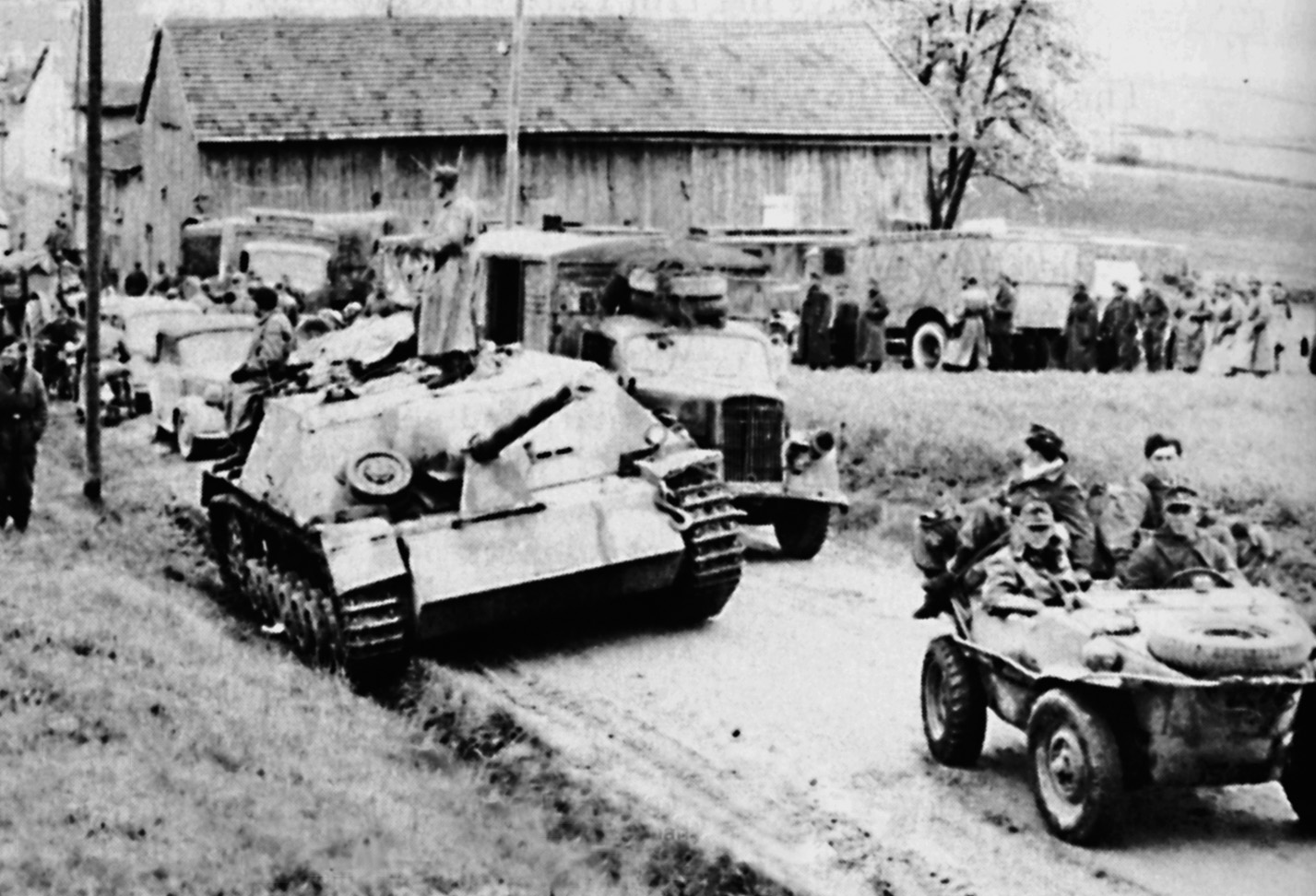
Ease in times of difficult negotiations
Then occurred one of those moments in history when levity helped defuse an uncomfortable discussion. Generals Earnest and von Wietersheim discussed further details of controlling the movement of German troops into captivity. It was suggested to the German general that the vehicles turn on their headlights, as more than a thousand vehicles would be entering the assembly area at dusk and at night. A wag present expressed reservation about the use of headlights at night, saying to the Germans, “If they [the Germans] are not afraid of the Luftwaffe.” This elicited laughter from everyone present, and it was agreed that there would be lights. The discussions then soon ended.
Colonel Raymond E. Bell, commander of the 359th Infantry Regiment, 90th Infantry Division, who was present at the negotiations, recalled the end of these surrender talks. Von Wietersheim drew his pistol from its holster and handed it across the table to General Earnest, as if handing his sword to his conqueror. Earnest, however, knew a gallant gesture when he saw one and reciprocated by drawing his pistol from its holster and handing it to von Wietersheim. With this respectful gesture, the formalities of the surrender were complete. Now it was time for implementation.
At 13:30 on May 4, in anticipation of the formal surrender, the headquarters of the 90th Infantry Division issued orders for the 11th Panzer Division to assemble in two areas. A watering station was to be established in each area, a task to be carried out by the 204th Engineer Battalion. It was estimated that the 11th Panzer Division would be logistically self-sufficient for four days. The division’s elements were to leave Czechoslovakia via two routes: one through the border town of Rittsteig, the other via Vseruby, where negotiations had taken place. The routes were to end in two assembly areas designated “A” and “B,” one on either side of the German town of Kötzting. The 2nd Battalion of the 359th was responsible for Area “A” west of Kötzting, while the 3rd Battalion was assigned Area “B.”
9,050 German prisoners of war
At 5:25 p.m. that afternoon, an enemy column approached the checkpoint of Lt. Col. Orwin C. Talbott’s 3rd Battalion. Everything seemed to be going well, but problems soon arose. First, there was an expected fuel problem, but then reports arrived at division headquarters that American soldiers from another infantry division were spying on soldiers of the 11th Armored Division passing through their lines. Lt. Col. James O. Boswell, the division intelligence officer, began “clearing the blockade.” By 11:30 p.m. that night, mechanized units of the 11th Armored Division had surrounded the assembly points, and at 2:30 a.m. the next morning, dismounted German soldiers began passing through the checkpoints.
A total of approximately 9,050 German soldiers surrendered. Of these, 225 were officers, 1,713 non-commissioned officers, and 4,834 soldiers from the 11th Panzer Division. The rest were stragglers from various units. The Americans were given approximately 155 motorcycles, 300 limousines, and 700 trucks, but only seven tanks, 15 self-propelled guns, and five tank destroyers. Weapons were also relatively limited: only six 150 mm infantry howitzers and five 105 mm howitzers were surrendered. By 3:30 p.m. on May 5, the command post of the 90th Infantry Division had been relocated approximately 45 kilometers southeast along the German-Czech border near Zwiesel. At 10:30 p.m. that evening, the division notified its 359th Infantry Regiment to prepare to invade Czechoslovakia near Nyrsko sometime on May 6.
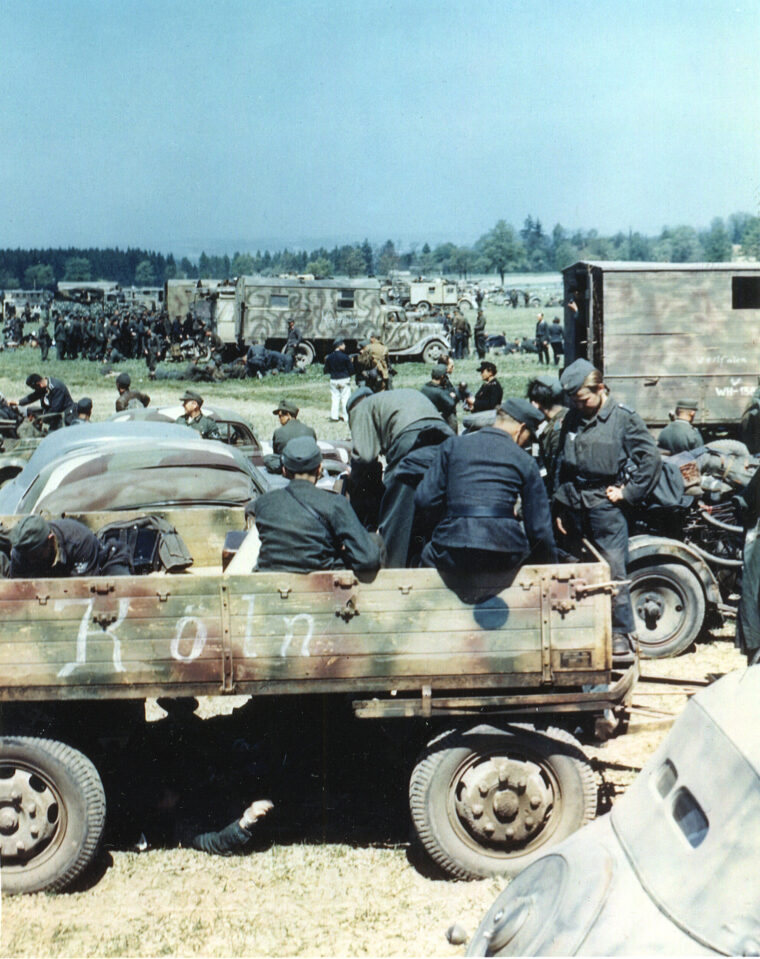
The 11th Panzer Division lived on after the war
The division’s battle with the 11th Panzer Division would last barely two full days. At the same time, the memory of General von Wietersheim’s surrender by the 90th Division was rapidly fading. General von Buttlar’s unit surrendered to the 26th US Infantry Division a few days later, and his soldiers joined the rest of the division near Kötzting.
It was now the task of the 2nd Cavalry Group to pick up where the 90th and 26th had left off. It took another four weeks for the dissolution of the 11th Panzer Division to be completed under the supervision of the cavalry soldiers.
A few days after the surrender, Captain Ferdinand Sperrl, who spoke fluent German, set up a military government cell in Kötzting, the town where the 11th Panzer Division had been demobilized. The German soldiers were soon allowed to return home, some taking their vehicles with them. Those who could not return to their homes in what was then Soviet-occupied Silesia found new accommodations, some in the Kötzting area. Sperrl established excellent contacts not only with the German units but also with the town, so that a traditional folk festival for Germany could be held shortly after the war’s end. Fifty years after the war’s end, his appearance sparked jubilation at gatherings of division veterans and townspeople.
Even after the end of hostilities in Europe and its official demobilization under the auspices of the 2nd Cavalry Group, the 11th Armored Division still retained certain elements of cohesion. For example, the division band exchanged its uniforms for civilian clothes and was deployed to Regensburg, the headquarters of the U.S. XII Corps, which was performing occupation duties. The members became known as the “Phillips (XII Corps’ Own) Band” and played for the entertainment of the Americans in the ballroom of a local hotel.
Then there was the large, elaborate parade in Munich in October 1946, staged for General Eisenhower. How Captain Sperrl, who allegedly orchestrated the coup to allow former members of the 11th Panzer Division to participate in the parade, accomplished this feat remains a mystery to this day.
“ Enemies became friends ”
This is how the surrender of the 11th Panzer Division unfolded. Both the veterans of the 2nd Cavalry Group (whose armored cavalry regiment patrolled the old German-German border for years after the war) and the veterans of the 26th Infantry Division enthusiastically claim that the 11th Panzer Division surrendered to them. In fact, however, the 359th Infantry Regiment of the 90th Infantry Division accepted the surrender of most of the 11th Panzer Division and then quickly moved on to other tasks.
Even though American veterans dispute the final outcome, there is no doubt that over the years the members of the German 11th Panzer Division—the Ghost Division —and their former American adversaries could proudly claim: “Enemies were friends.” Today, the German Ghost Division, “which was real and deadly,” is merely an apparition, and the division’s noble and effective performance has been recorded in the annals of World War II tank combat.
